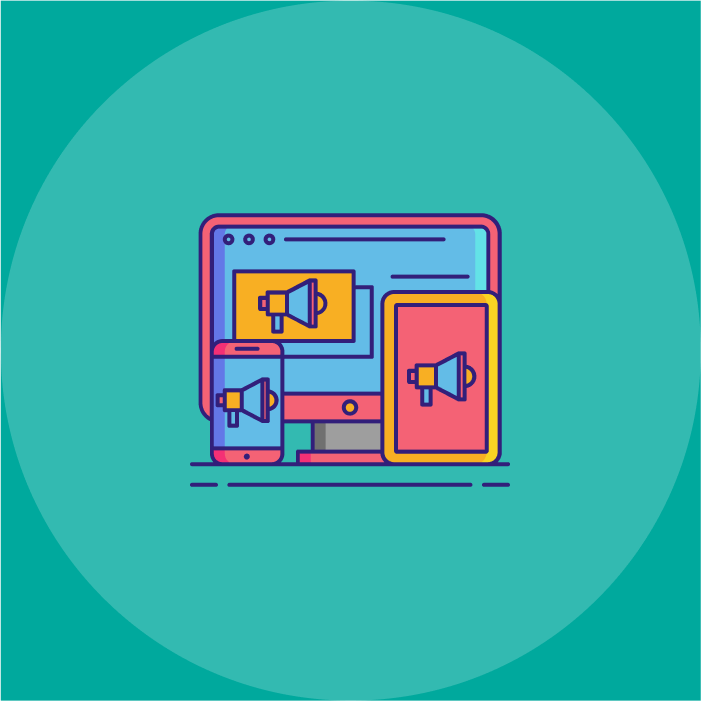Don't think twice before getting super specific when you are into online business, it will help you to define all your criteria to increase online sales.
As the e-commerce industry continues to grow exponentially and the global market expands, many online businesses are finding that offering digital products is the best way to keep profits high and costs low.
Digital products are quite popular with consumers. The online education industry alone has grown exponentially and the market is expected to exceed the $325 billion mark in just a few more years. Other digital products and services have grown in recent years as well, with online entrepreneurs selling everything from workout regimens to digital templates to SaaS systems and more.
However, marketing these digital products comes with its own sets of challenges. Obviously, there is no physical product that can be touched, used, or even photographed; digital products tend to offer benefits that are less tangible. Plus, as the industry becomes more saturated, competition is intensely fierce.
So, how can you successfully advertise your online products to your audience and boost conversion rates?
Let’s discuss.
1. Find the Niche that Matches Up
The key to making it big in the digital product space is by going small. Since there are no real physical limitations to the customers that your online services can reach, you don’t need to fear to offer niche products to specific audience segments.
Consider the type of digital business you want to create.
- What gap in the market have you identified that you could serve?
- Is there a specific industry or topic that you have a lot of knowledge, experience, or interest in?
Once you have a product in mind, it is essential that you find the niche audience that would need or want it. For instance, say that you sell a digital e-book for cooking healthy vegan Asian food. What type of audience segments would match up with this product?
[Recommended: 5 Tips You Need to Know In Order To Successfully Manage Your Online Brand ]
- Vegans
- Vegetarians
- People interested in healthy eating and cooking
- People who want to learn how to cook vegan or healthy food
- People interested in learning how to cook Asian food
- Chefs and cooks
From there, you can start to create customer personas that will guide your marketing strategy.
Don’t be afraid to get super specific here, especially as you gather more consumer information. Perhaps your best audience is thirty-something moms who are looking for delicious healthy dinners that their kids will eat. Or maybe it is professional chefs who want to expand their skills and offer more diverse food options for their customers.
Once you have nailed down the ideal niche, do some research and discover the pressing questions people are asking. What ways can you align your product to these niche’s needs or pain points?
This will help immensely with your targeting strategies and product development. You can use this information to fuel your content strategy and marketing ads by positioning your product or brand as a solution to their questions.
Take it back to the vegan Asian e-cookbook example. Certainly, there are other vegan Asian cookbooks available online, so how can you make your product stand out from the rest to your audience? You need to gear your marketing around trending questions. Ahref’s new Questions feature in the Keyword Explorer is a fantastic resource to get a feel for this.
If you notice that the majority of your target audience is full of cooking newbies, you could include video tutorials - since it is an online product. Maybe you can offer multiple language options or a pre-made shopping list with online links to various products.
By nailing down your niche from the beginning, you can start to incorporate further product benefits and marketing content that helps you reach this segment in a meaningful way.
2. Build Up Hype for Pre-Launch
Unless there is a huge demand for your product, you are not likely going to see high volume sales in the beginning - unless you build up lots of hype before your launch. Since competition is so thick online, you will want to establish brand recognition right away. This could be a reason why a customer chooses your business over the next.
In order to make your online product stand out from the start, you need to find a way to build up the hype and make the launch something that your followers look forward to.
Social media is a great tool for this because of the low-cost and high visibility that it offers. Partnering with industry-specific influencers or media outlets is a great way to establish credibility before your product officially launches. On your brand’s social media pages, you may want to offer a giveaway contest in exchange for follows and email address submissions to help build up your customer database. Make this launch feel even more exclusive by accepting pre-orders or offering special discounts for those “in the know.”
Another good strategy is to create a personality behind the product with a video series. This can do wonders to create an instant sense of brand recognition and add value to the user experience. As the online world becomes increasingly video-centric, building a presence on the major networks is a great way to put a face to the brand.
These days, the video is the reigning king of content, particularly on social media. It is predicted that soon up to 82% of worldwide online traffic will streaming be video content, with the vast majority of this on social media. Be sure that you are integrating video heavily into your social strategies, even during your pre-launch phases. Use this as an opportunity to introduce your style to your audience and be sure that your brand’s voice and personality shine through to generate excitement and interest.
3. Offer Risk-Free Experiences
As a new business, you are already faced with the challenge of keeping a customer interested in a mere matter of seconds when they land on your website. One of the biggest challenges with selling digital products is establishing trust with your customers solely through your branded platform. Furthermore, online selling comes with its own list of risks, especially in relation to security breaches and data leaks. Therefore, you need to be doing all that you can to create an online experience that boosts a customer’s confidence by eliminating doubts and risks.
There are some marketing tactics that you can use here to build customer trust with your digital business. Start by removing the common worries that customers have towards digital products. This typically involves the prospect of wasting money on something that does not live up to expectations. Depending on the product(s) that you sell, consider offering risk-free experiences, such as a free trial period or free returns within a set time period. For digital items like e-books or online courses, consider extending a mini-preview so that customers can get a feel of what to expect. By offering these kinds of deals, you can remove this risk of buyer’s remorse entirely and increase the chances of conversions.
Of course, online purchases can appear to be risky to customers concerned with the safety of their financial data. There are several ways to assure customers that they can trust your company to safely handle these transactions.
One is to partner with a well-known e-commerce platform with built-in processing or offer other trusted options, such as PayPal or Apple Pay. You will also want to communicate that your website is safe by including the proper security tools. Be sure that your payment processing system has SSL certification for encryption and display any security systems with trust badges on your website.
4. Incorporate Lots of User-Generated Content (UGC)
When it comes to creating credibility through your marketing content, UGC is the way to go. According to Statista’s report, 73% of online shoppers reported they felt more confident in their purchase if the website displayed UGC, such as customer reviews and ratings. Furthermore, 67% stated that it created a better shopping experience and 48% agreed that it helped them identify the product that they wanted to buy.
Make the most of customer reviews, testimonials, and visual content to build trust and establish credibility. Display product reviews throughout your website and social media platforms, and respond to customers when applicable. If you offer multiple products, be sure to list specific reviews on product pages so that customers have easy access to the information that could influence their purchasing decision.
UGC is not always easy to gather, especially when you are first starting out. You will need to strategize in order to generate this kind of content right off the bat. Unfortunately, most customers won’t go out of their way to leave a review, but 70% of shoppers say that they will if the business asks them to. Creating a trigger-based email campaign that asks for a review several days after a purchase is a great way to get started. Be sure that you have connections with third-party review sites as well, such as Yelp, Google My Business, or tech-related sites like G2 Crowd so verified customers can leave feedback on popular review platforms.
Conclusion:
Selling an entirely digital product requires you to build trust and confidence with your customers through your branded content. Be sure that you are doing all that you can by understanding which niche to target and creating the marketing content that attracts customers towards a conversion.
Subscribe to weekly updates
You’ll also receive some of our best posts today











